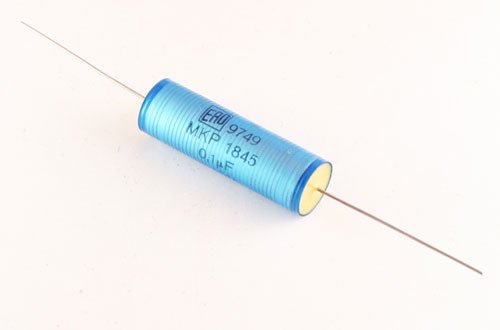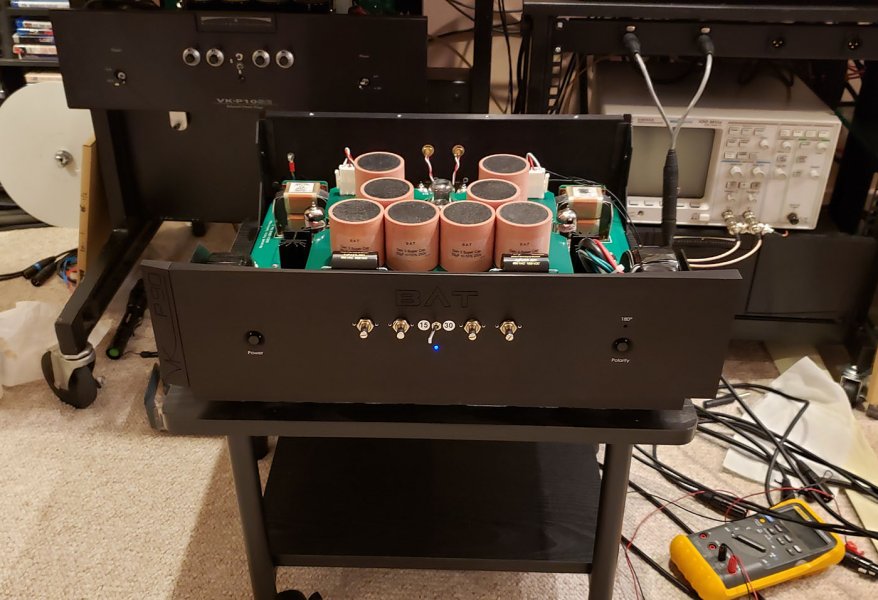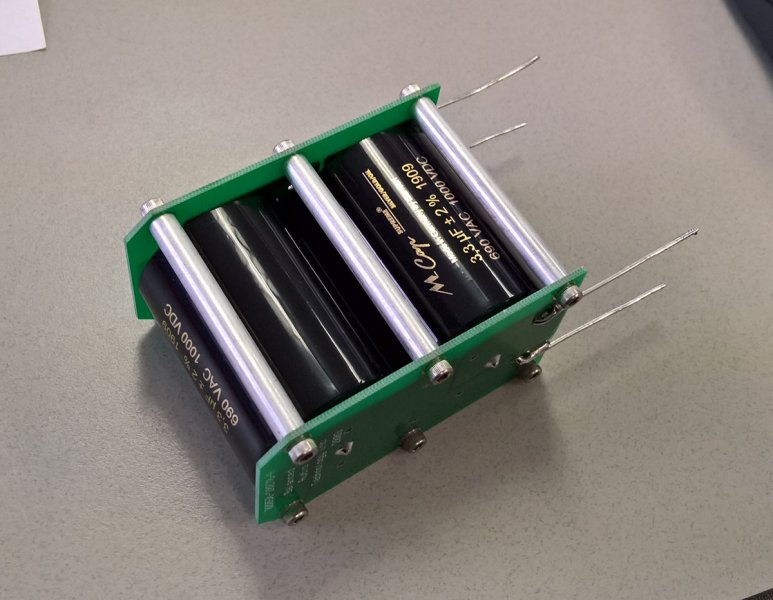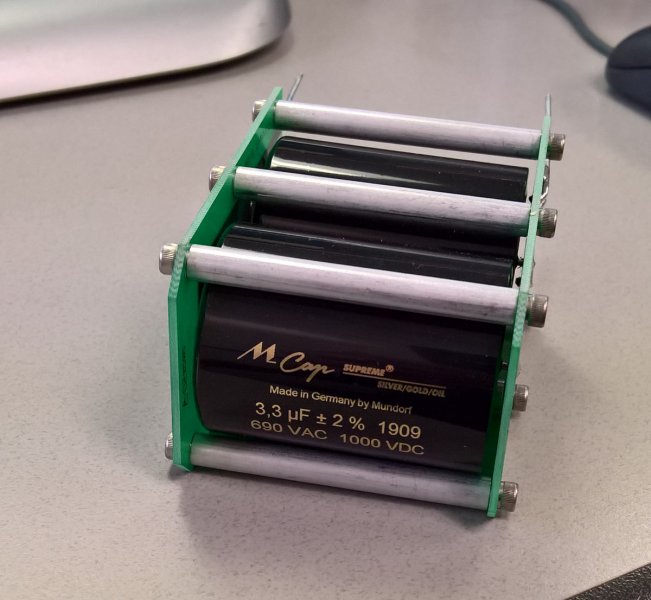Its not all bad. LPs have bandwidth to over 40KHz. And the lacquers have a noise floor that rivals Redbook if the cutter head is properly set up (the surface noise comes mostly from the pressing plant). LPs have no expectation of being played in a car- and CDs do. So if you are mastering an LP from the source file it may will be lacking DSP compression that the digital release file has. So the LP may well be wider dynamic range on that account.As with LP's. I don't get cutting an LP from a digital source.... Blasphemy!!!
If tape is so good why does it record so poorly?
- Thread starter Kingrex
- Start date
You are using an out of date browser. It may not display this or other websites correctly.
You should upgrade or use an alternative browser.
You should upgrade or use an alternative browser.
Hi Charles, the signal from a repro head rises at 6dB/Octave. Can this signal be directly applied to the recording head with Eq ?Interesting post.
Please realize that ANY deck can have a different "sound" when used for recoding versus just playing back a tape. U47 and I found out long ago that decks, specifically Revox, can make a better sounding recording than they do when just playing back that or anther pre-recprded tape. We've (and I have to add most of you reading this) have found how "wanting" the playback electronics are in most decks, hence the flourishing of purpose-built, "outboard" electronics. Not many folks have delved into outboard record electronics.
Please understand that the decks we are talking bout here have TOTALLY separate record and playback circuitry - AND different heads. Gain structure in the amplification is different and you are "de-equalizing" when playing back versus equalizing/de-equalizing when recording/playback - using different techniques/components in those networks. PB and record heads are different - different physical configurations and low impedance for record and (usually) a good deal higher for playback. And there is the necessity to ad bias to the record head to linearize the whole process.
I've tried upgrading the audio parts in a few 1500's can say that they don't come close to a even a stock Studer. Part of the problem has to do with the heads. Panasonic made most of the heads for all of the Japanese recorders - confirmed by John French. I've done listening comparisons between the Technics/Nortronics/Studer/Nagra/Flux Magnetics heads and the best description of what I heard was a "loss of information" with the Panasonics - for a whole number of possible reasons like core material/lamination thickness/annealing/wire.
Charles
From a tape duplication perspective, I mentioned a long while back that a prerecorded tape is also ALREADY equalized per some "standard" curve - be it NAB/IEC/AES. When you Dupe a tape you use two decks, the playback decks' electronics amplify and RE-EQUALIZE it back to "flat". The second deck then amplifies and EQUALIZES it back to where it was or to fit another curve. Think of all the EXTRA amplification re/equalizing components involved to do this. What about the amplitude/frequency dependent phase leads/lags that this additional "futzing" adds the original "sound"? You are also throwing away gain while adding noise to the process. Why not just amplify the tape FLAT and feed it to the record head where the bias is added? I tried this on a [two] modified 1500[one with a wired out Nortronics pro PB head and the other] with a Nortronics Record head and drove it with one of my preamps sans the playback EQ (but with a little EQ for the record head itself). It sounded really nice. If I were into trying to provide the ABSOLUTE BEST best tape duplication services, I'd use an approach like this - otherwise you are COLORING THE SOUND OF THE MASTER TAPES tape(s).
NOTE [ ] implies a later edit but now all the edited work have a line thru it?????????
I have several 24 bit / 192 khz digital recordings which were then recorded on tape .
(Profesionally done not by me)
They sound very nice , they do get the bloom space organic quality of tape in a certain sense .
Dubbing gives very good results , i have dubs played on my Studer B62 and then recorded on my M15 A via the eternal arts tape stage .
The telefunken has been professionaly calibrated for the SM 468 tape that was used .
Ps Nothing beats a good analogue recording off course .
Microphone placement is essential for capturing dynamics on tape , but if done right ,... its bye bye digital
(Profesionally done not by me)
They sound very nice , they do get the bloom space organic quality of tape in a certain sense .
Dubbing gives very good results , i have dubs played on my Studer B62 and then recorded on my M15 A via the eternal arts tape stage .
The telefunken has been professionaly calibrated for the SM 468 tape that was used .
Ps Nothing beats a good analogue recording off course .
Microphone placement is essential for capturing dynamics on tape , but if done right ,... its bye bye digital
I too have done quite a few recording of 24/192 or 24/96 sources, and they do indeed sound very good on tape. I also use the SM468 exclusively, my favorite tape.
I am not very big on dubs, but I have refined my system to the point where they now sound extremely close to the originals. Using the MCI as the transport, with Flux Magnetics head, through my head preamp going into the Ampex ATR-102.
I am not very big on dubs, but I have refined my system to the point where they now sound extremely close to the originals. Using the MCI as the transport, with Flux Magnetics head, through my head preamp going into the Ampex ATR-102.
Attachments
Nice , is that a " BAT " modified tape head pre with duelund cast caps ?I too have done quite a few recording of 24/192 or 24/96 sources, and they do indeed sound very good on tape. I also use the SM468 exclusively, my favorite tape.
I am not very big on dubs, but I have refined my system to the point where they now sound extremely close to the originals. Using the MCI as the transport, with Flux Magnetics head, through my head preamp going into the Ampex ATR-102.
Yes, it is our VK-P90 model, and yes, Duelund caps... they picked a lot of former Jensen business when these guys closed down. Unfortunately, not all the ones we need, so we are still searching for some replacements. So I am open to recommendations. 
Nice , no i also dont know of any better either .Yes, it is our VK-P90 model, and yes, Duelund caps... they picked a lot of former Jensen business when these guys closed down. Unfortunately, not all the ones we need, so we are still searching for some replacements. So I am open to recommendations.
I also use duelund in the X over.
Ps may be ken stevens " Black path extreme " caps , i reckon they are not bad either .
But he aint selling
I have no desire to record my digital. My digital playback is very nice.
I do have a desire now to make mic tapes as I have about 75 tapes now. Some have a couple songs I love, while thr rest might be ok.
Is there an ideal best machine for recording that is a reasonable $5k type machine.
What about the idea of a external record unit? I know nothing about recording. Only that someone told me you have to use the test tones to set the head bias.
How would one get very good. Does not have to be excellent, just very good recording from ones tapes.
I do have a desire now to make mic tapes as I have about 75 tapes now. Some have a couple songs I love, while thr rest might be ok.
Is there an ideal best machine for recording that is a reasonable $5k type machine.
What about the idea of a external record unit? I know nothing about recording. Only that someone told me you have to use the test tones to set the head bias.
How would one get very good. Does not have to be excellent, just very good recording from ones tapes.
Are you telling me you use those expensive duelunds in the powersupply ??There are many interesting choices, unfortunately one of our applications calls for pretty high voltage. Jensen paper in oil caps handled it with no issues, while sounding good. But most modern parts have relatively low limits.
intreresting tape pre.......I´d recommend Mundorf Supreme Silver in Oil....
best
Leif
best
Leif
but the silver in oil has some features regarding harmonics I like.......
the tape version of your phono is not mentioned in your web page?
best
Leif
the tape version of your phono is not mentioned in your web page?
best
Leif
For power supply high voltage Icar mkp amazing industry quality
 Coupling cap my favorite audyn true copper
Coupling cap my favorite audyn true copper


 www.hifibau.de
www.hifibau.de

Hochspannungskondensator von ICAR Typ LNK-P6X-25-180, 25 uF / 1800 V, Capacitor | eBay.de
Hochwertiger Hochspannungskondensator von ICAR Serie LNK-P6X (Typ-Nr. LNK-P6X-25-180), zylindrische Konstruktion in Plastiktubus, stirnseitig absolut dicht und mit zwei M8-Gewindebuchsen versehen. Kapazitätswert bei 25 µF bei 1800 Volt DC, Maße Korpus ca.
www.ebay.de


Audyn True Copper
Ein hochwertiger Kondensator wie der Audyn True Copper Cap sollte sich stehts neutral in seinem Umfeld verhalten. Und dies gewährleistet der Audyn…
There are too many good choices, in general I try to be careful with silver, sometimes you get too much of good thing. That particular selection was done some time ago, we preferred these ones. It is entirely possible someone else, in a different system, would have made different choice.but the silver in oil has some features regarding harmonics I like.......
the tape version of your phono is not mentioned in your web page?
best
Leif
The tape preamp is not on our site, because there is no such commercial product, these are just made by myself for my personal use. We discussed making such a product, but decided it did not make sense for us. So at least for now this is how it is. The phono stage market is many, many times larger.
We are aware of that brand, it had the same voltage issue. But we might take another look, as choices are not many. I need a high quality decoupling cap in the .015-.022uF range, copper would be great, but it must be able to take 900V.For power supply high voltage Icar mkp amazing industry quality
Coupling cap my favorite audyn true copper
Hochspannungskondensator von ICAR Typ LNK-P6X-25-180, 25 uF / 1800 V, Capacitor | eBay.de
Hochwertiger Hochspannungskondensator von ICAR Serie LNK-P6X (Typ-Nr. LNK-P6X-25-180), zylindrische Konstruktion in Plastiktubus, stirnseitig absolut dicht und mit zwei M8-Gewindebuchsen versehen. Kapazitätswert bei 25 µF bei 1800 Volt DC, Maße Korpus ca.www.ebay.de
View attachment 84745

Audyn True Copper
Ein hochwertiger Kondensator wie der Audyn True Copper Cap sollte sich stehts neutral in seinem Umfeld verhalten. Und dies gewährleistet der Audyn…www.hifibau.de
If going tube the Ampex 351 electronics are excellent. They must be properly refurbished and you might want to change the EQ from NAB to IEC1 or IEC2. I've seen the 351 electronics used with the Ampex 300, 350 and 440 transports. These transports are not gentle with tapes so you have to learn a technique called 'magnetic braking' and there are no tape counter or search functions.I have no desire to record my digital. My digital playback is very nice.
I do have a desire now to make mic tapes as I have about 75 tapes now. Some have a couple songs I love, while thr rest might be ok.
Is there an ideal best machine for recording that is a reasonable $5k type machine.
What about the idea of a external record unit? I know nothing about recording. Only that someone told me you have to use the test tones to set the head bias.
How would one get very good. Does not have to be excellent, just very good recording from ones tapes.
If solid state I would look at a Studer, like the A80. Otarai made some nice machines as well.
Vishay Röderstein MKP 1845 rare is no longer produced 1600V dcWe are aware of that brand, it had the same voltage issue. But we might take another look, as choices are not many. I need a high quality decoupling cap in the .015-.022uF range, copper would be great, but it must be able to take 900V.


TCC Cap
New TCC 0 15UF 1000V coupling capacitor
New TCC 0 15UF 1000V coupling capacitor on sale,buy cheap New TCC 0 15UF 1000V coupling capacitor from the best shopping agent yoycart.com
these are the only ones that I can think of
Similar threads
- Replies
- 7
- Views
- 255
- Replies
- 3
- Views
- 393
- Replies
- 16
- Views
- 2K
- Replies
- 6
- Views
- 1K
| Steve Williams Site Founder | Site Owner | Administrator | Ron Resnick Site Owner | Administrator | Julian (The Fixer) Website Build | Marketing Managersing |




